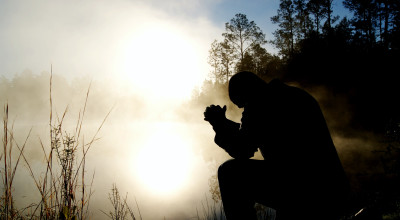The Importance of Aftercare
April 1st, 2024
By P. Casey Arrillaga, LCSW, LCDC
Tens of millions of Americans need treatment every year for mental health disorders including addiction to alcohol and/or other drugs. Of these, only a small percentage get help, and many continue to struggle after treatment has ended. What can be done to improve their odds of living good lives? One factor that can make all the difference is aftercare. We’ll look at the ins and outs of this vital piece of the treatment experience and how to determine if you or your loved one is getting what they need.
What We Know So Far
In 2020, the Substance Abuse and Mental Health Services Administration [SAMHSA], surveyed Americans about mental health, including addiction to alcohol and other drugs (also known as SUD for “Substance Use Disorder”). They found that over 52 million American adults had issues with mental health. The survey separated this from SUD, which was problematic for another 40 million people aged 12 or older. This means that about 15% of Americans aged 12 and older needed SUD treatment. Unfortunately, many of these never got the treatment they needed or didn’t get enough of it. Of the people who showed both SUD and other serious mental health disorders, about half got treatment for one or the other, but less than 10% were treated for both. This might be a good time to note that at Windmill, we always treat our clients for any addiction and other mental health conditions holistically, because we know it is hard to recover from one condition when another goes completely unaddressed. Unfortunately, many treatment facilities do not do this, or don’t take the time required to do it effectively.
To make matters worse, many who get treatment still struggle after they get out. Relapse is a danger for SUD and any other mental health disorder. While estimates differ, most researchers find relapse rates after treatment to be in the 40-60% range. Many factors play a role in this. For instance, younger people have a higher risk of relapse. Having multiple mental health issues also increases relapse risk. How long the treatment program lasts is significant, with longer programs leading to lower relapse risk even if the client doesn’t finish them. Of course, whether the client completed the program makes a big difference. Unsurprisingly, program completion is associated with lower relapse risk.
Research shows that the first 90 days after leaving treatment are the most treacherous. While the risk is lower for those who can get through this vital time period, support is still needed. The longer someone stays connected to support systems, the better their odds of avoiding relapse or minimizing how bad it gets if it happens. Higher levels of support and staying connected to recovery fellows and the treatment center community increase the chances of staying healthy. If relapse occurs, the connected client is more likely to return to treatment and turn things back around.
This is where aftercare programs come in. Aftercare is a general name for any follow-up care that happens after residential or intensive outpatient treatment has been completed. This may include alumni events and gatherings, meetings held at the treatment center, follow-up phone calls, social media groups, or anything else that keeps the alumni client connected to their treatment experience after they are done.
Aftercare can make the difference between staying healthy or relapse after treatment has ended. While it is not the only factor, engagement in aftercare has been shown to improve not only the chances of preventing a return to the previous problems, but it also increases satisfaction with recovery and quality of life. Some researchers have found aftercare so important to recovery after treatment that they don’t like using the term “aftercare,” because they feel it doesn’t put enough emphasis on how much of a difference it makes. They would prefer that it be given a name that makes it clear that it is a part of the treatment experience that every client should experience rather than something optional that is done “after.”
All of this makes clear that an important question to ask before choosing a treatment center is whether they offer aftercare and how robust that aftercare program is. Many places that might otherwise seem like good options fall short in this area, which means that no matter how good their treatment is, they are sending their clients out into the world without the tools and support they need at this most vital stage.
What Should You Look For?
When looking at treatment options, you want to find a place that puts strong emphasis on aftercare. It should include multiple ways for clients to stay connected and involved after they leave treatment.
As you may have guessed, at Windmill, we take aftercare very seriously, which may be one more reason we have been rated as having the best success rates in the nation. Here are some of the ways in which we have aftercare covered:
- Multiple alumni meetings weekly – We have five recovery/support meetings that include alumni and current clients every week. Three are open to both alumni and their family members, including our DAA meeting, our SMART Recovery Family & Friends meeting, and our weekly family workshop. All three are hybrid (in-person and online), so our alumni and their families can join from wherever they are. We have two other specialized meetings weekly that alumni and current clients can attend together to share experience, strength, and hope, including our weekly Guardians Anonymous meeting for veterans and first responders.
- Special events – Alumni and their families come from all over for our annual alumni roundup, Halloween party, and other events throughout the year.
- Alumni calls – Our staff makes follow-up calls to alumni to see how they are doing. We also get regular updates from many of our alumni who check in to let us know how their lives are going.
- Featured speakers – Many of our alumni have come back to speak to the community at Windmill, often talking to current clients about how their lives have changed during and after treatment. It is a great joy to see them bring their families to celebrate getting one or more years of recovery and talk about how they did it.
- Social media – Windmill has several private social media groups where alumni share victories and milestones, as well as being able to ask for support when they need it. We also have a private group for alumni family members, many of whom have gotten to know each other through our family workshop and SMART Family & Friends meetings.
The Bottom Line
Relapse risk is real for anyone who struggles with any mental health disorder, including addiction of any kind. Aftercare can make a vital difference, sometimes being the support that makes it all work after treatment. When considering treatment for yourself or a loved one, find a program that has the strongest aftercare you can.
About The Author
P. Casey Arrillaga is the Team Leader for Education at Windmill Wellness Ranch, and he is the author of books including “Realistic Hope: The Family Survival Guide for Facing Alcoholism and Other Addictions”.


